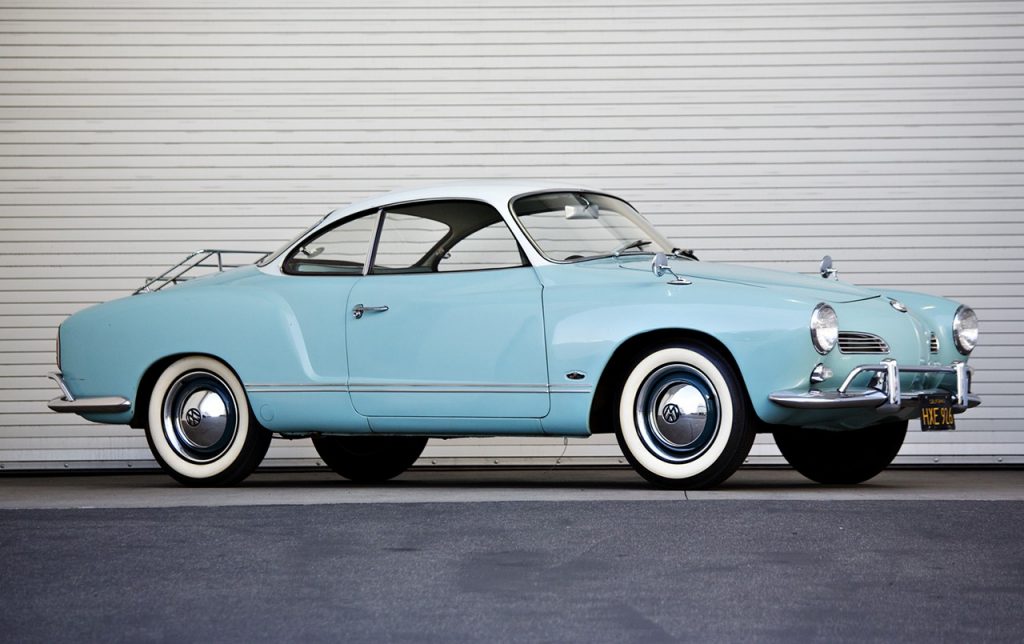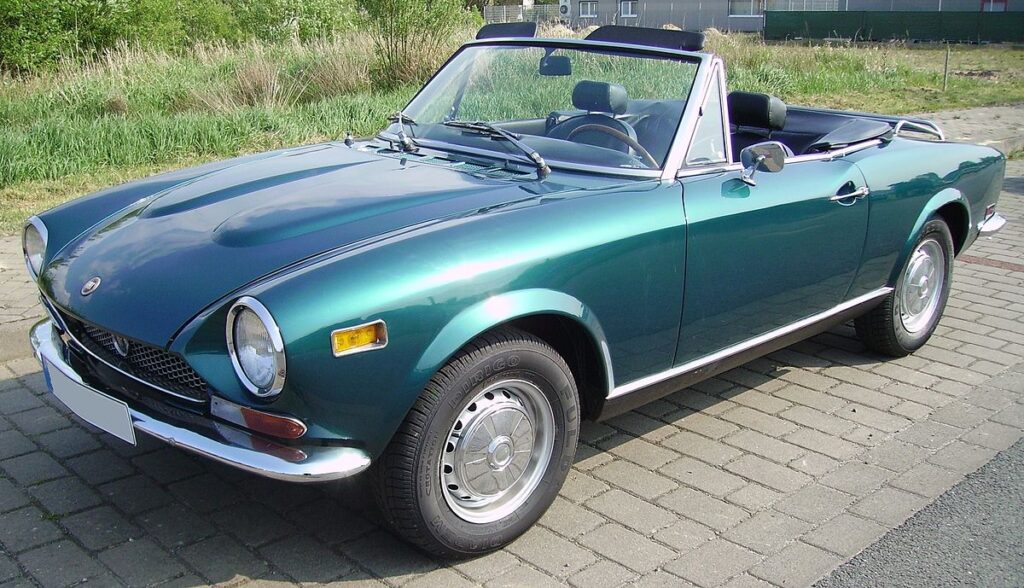
Classic cars offer a unique blend of nostalgia, style, and driving pleasure, making them a favorite among enthusiasts. You don’t need to break the bank to own a piece of automotive history – there are many affordable classics, particularly from the pre-1980 era, that you can buy for under 20,000€. In this article, we’ll explore 10 such cars that combine timeless design and fun driving experiences at a reasonable price.
1. Fiat 850 Vignale (1964–1968)

Average Price: 7,000–18,000€
The Fiat 850 Vignale is a charming, compact classic with an Italian flair. The Vignale-bodied coupe version of the 850 is particularly prized for its elegant lines and rarity. Powered by an 843cc engine, it’s not a performance monster, but its lightweight chassis and quirky design make it a joy to drive. It’s a stylish and affordable entry into the world of classic Italian cars.
- Why it’s a great buy: Rare Vignale styling, affordable, easy to maintain because of the Fiat 850 mechanics.
- Cons: Low power, difficult to find parts for specific Vignale models.
2. Volkswagen Karmann Ghia (1955–1974)

Average Price: 15,000–20,000€
The Karmann Ghia is a timeless blend of German engineering and Italian design. Its flowing lines were penned by Carrozzeria Ghia, while it was built by the Karmann coachbuilder. Underneath its sleek body lies the dependable Volkswagen Beetle platform, making it easy to maintain. With its unique design and reliable mechanicals, the Karmann Ghia is a fantastic classic for anyone who appreciates style without compromising on reliability.
- Why it’s a great buy: Iconic design, reliable Volkswagen parts, affordable maintenance.
- Cons: Slow performance, rising prices for pristine models.
3. Fiat 600 (1955–1969)

Average Price: 5,000–15,000€
The Fiat 600 played a key role in Italy’s post-war economic boom, providing affordable transportation to the masses. Its small size and rear-engine layout make it a fun and nimble car to drive, especially in city environments. While its 633cc engine may not win any drag races, its charm and simplicity more than make up for it. The Fiat 600 is an excellent starter classic with plenty of character.
- Why it’s a great buy: Iconic Italian design, affordable price, easy to work on.
- Cons: Limited speed, basic interior.
4. Fiat 124 Sport Spider (1966–1982)

Average Price: 14,000–20,000€+
Designed by Pininfarina, the Fiat 124 Sport Spider combines Italian flair with sporty performance at an affordable price. It comes with a 1.4L, 1.6L, or later 2.0L engine, making it a peppy roadster perfect for cruising. With its stunning lines, lively handling, and convertible top, the Fiat 124 Sport Spider delivers an engaging driving experience reminiscent of much more expensive classic sports cars.
- Why it’s a great buy: Italian style, affordable, good driving dynamics.
- Cons: Prone to rust, regular maintenance required.
5. MGB (1962–1980)

Average Price: 10,000–18,000€
The MGB is one of the best-selling British sports cars of all time and offers a fun and engaging driving experience. Available as a roadster or GT coupe, the MGB is powered by a 1.8-liter engine that delivers respectable performance for its era. Its simple mechanics make it easy to maintain, and there’s a large aftermarket for parts, making the MGB one of the most accessible and affordable classic sports cars on the market.
- Why it’s a great buy: Easy to maintain, large parts availability, fun driving experience.
- Cons: Not particularly fast, rust issues.
6. Triumph Spitfire (1962–1980)

Average Price: 9,000–15,000€
The Triumph Spitfire is another affordable British sports car that delivers plenty of fun for a reasonable price. Its lightweight design and small 1.1L to 1.5L engines make it agile and fun on twisty roads, even if it’s not the fastest car around. With its convertible top and classic styling, the Spitfire offers a quintessential British motoring experience.
- Why it’s a great buy: Lightweight, fun to drive, convertible charm.
- Cons: Basic interior, prone to rust, some electrical issues.
7. Innocenti 950 Spider (1961–1968)

Average Price: 10,000–16,000€
The Innocenti 950 Spider is a rare and delightful Italian classic designed by Ghia and powered by a British Austin-Healey Sprite engine. With a 948cc engine delivering 43 horsepower, it’s not the fastest car on the list, but it compensates with beautiful styling and a fun, lightweight driving experience. Its combination of Italian design and British engineering makes it a unique classic that stands out in the crowd.
- Why it’s a great buy: Rare Ghia design, affordable, a blend of Italian style and British engineering.
- Cons: Limited performance, finding parts can be tricky.
8. Citroën DS (1955–1975)

Average Price: 15,000–20,000€
The Citroën DS is one of the most revolutionary cars ever made. Its futuristic design, advanced suspension system, and hydraulic innovations make it an icon of automotive history. While the Citroën DS might not be a traditional sports car, its unique driving experience, superb ride quality, and avant-garde looks make it a fantastic classic car to own. Models in good condition can be found within this budget, especially if you avoid the higher-performance variants.
- Why it’s a great buy: Revolutionary design, smooth ride, unique driving experience.
- Cons: Complex mechanics, costly repairs for hydraulic systems.
9. Porsche 914 (1969–1976)

Average Price: 15,000–20,000€+
The Porsche 914 is one of the most affordable ways to own a classic Porsche. Co-developed with Volkswagen, the mid-engined 914 offers excellent handling and balance, making it a joy to drive. While early models featured VW-sourced engines, later versions came with more powerful Porsche units, delivering better performance. Its quirky styling and Porsche badge make it a desirable choice for classic car enthusiasts.
- Why it’s a great buy: Mid-engine handling, affordable entry into Porsche ownership.
- Cons: Modest power, VW engine in early models, rising prices.
10. Lancia Fulvia Coupe (1965–1976)

Average Price: 10,000–18,000€
The Lancia Fulvia Coupe is a hidden gem in the classic car world. Known for its rallying success, the Fulvia is a front-wheel-drive coupe with sharp handling and a rev-happy 1.3L V4 engine. Its elegant design, especially in the earlier models, has earned it a loyal following. The Fulvia’s motorsport heritage and timeless looks make it a fantastic option for anyone seeking an affordable Italian classic.
- Why it’s a great buy: Rally heritage, sharp handling, beautiful design.
- Cons: Parts can be expensive, prone to rust.
Final Thoughts
These 10 classic cars offer a variety of driving experiences, from nimble city cruisers to sporty roadsters and rally-inspired coupes, all without exceeding the 20,000€ mark. Whether you’re drawn to Italian styling, British charm, or German engineering, there’s a classic car on this list to suit your taste and budget. Just remember to factor in maintenance and parts costs when choosing your dream car. With the right choice, you’ll not only enjoy the pleasures of owning a classic but also the potential appreciation in value over time.


